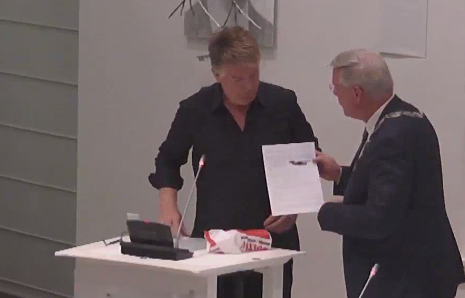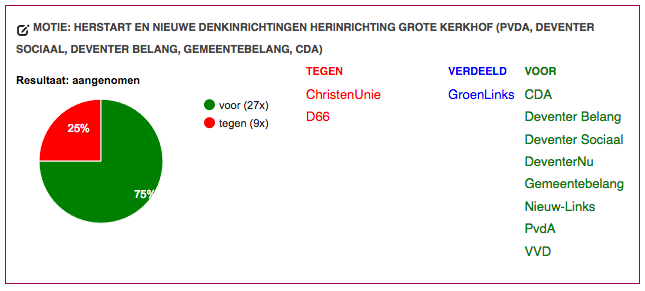Updates
A Ticket System for Government (Or: Let’s Finally Give the Ombudsman Teeth)
The ombudsman, as it stands, is a shark without teeth. It cannot even smell a scandal if it was bleeding before their eyes — can’t sense, can’t bite, can’t act, can’t fix. It’s a watchdog with no jaws. So let’s give it an upgrade or even better give the government such an upgrade that Ombudsman loses the necessity for their entire existence.
This isn’t some grand ideological revolution. It’s just a silly idea for a public ticket system. Silly, but powerful.
Imagine a civic ticket system — not buried in obscure forms, not locked in back-office email chains. Just like an internal help-desk, but for governance. Public, structured, traceable. And smart.
This is what it looks like.
Core Idea
Citizens should be able to report issues publicly — not buried in anonymous inboxes, not hidden behind “ongoing investigation” seals. People already talk about public issues. If people can talk about public issues with their friends, why can’t they track them together too?
A government ticket system could work just like internal systems in IT or customer service — but with a civic twist.
This is not a place for endless debate. It’s a structure to frame problem → proposal → response, cleanly and traceable.
This system proposes a transparent, iterative problem-solving interface where AI is used not to obscure, but to clarify.
The System: Public, AI-Structured, and Transparent
The system is made up of 4 stages — and yes, it uses AI — but only as a tool to help people sharpen what they’re already saying.
Every issue goes through this cycle:
1. Problem Description
a) Citizens submit an issue.
b) The AI cleans up the language, consolidates overlapping inputs, and upgrades the coherence of the report.
c) A public change-log shows the input that evolved the description — all steps visible, all input attributable.
2. Proposed Solution
a) Based on the refined problem description, the AI drafts a solution or possible action path.
b) This is visible to the public as a formal response — no magic, just structured reasoning.
c) This is not a decision. It’s a draft — structured logic, not authority. Only advice.
3. Critique Layer
a) Citizens respond to the proposed solution — a structured challenge to the proposal..
b) Their remarks are also structured by AI — not censored, but upgraded for clarity and grouped by theme or angle.
c) Again, change-logs and input trails are visible. No anonymous edits. No hidden manipulations.
d) in a sense this is the same as step 1 (problem description)
4. Upgraded Solution
a) The AI integrates valid critiques and proposes a refined version of the solution.
b) This is the “feedback-reinforced” stage, where the system attempts synthesis, not endless argument loops.
All stages remain visible — including abandoned tickets, failed resolutions, and ongoing ones. This creates a living public record of issues and proposed governance responses.
This is the synthesis. 1 = 2 + 3 = 4.
Why This Matters
- It forces clarity and traceability. No more vague complaints floating in chaos.
- It turns public input into a collaborative upgrade process.
- It shows which tickets are being handled, stalled, ignored — in plain sight.
- It makes every AI edit accountable, not mysterious.
- It doesn’t replace the ombudsman — it arms them.
Business Model? Sure — But Keep It Public
Yes, this is a product. But no, it shouldn’t be commercialized. This is civic infrastructure. It belongs to the commons.
It could be sold to municipalities, NGOs, or transparency coalitions — but that defeats the purpose.
Build it, release it, and let it run at zero cost. The public has already paid for enough systems that don’t work. This one should.
The value lies not in monetization — but in legitimacy.
Expanded Use: From Complaint Board to Administrative Operating System
What starts as a feedback tool can evolve into a complete civic engine. The system can scale:
- Reported Issue
- Processed Issue (by a public servant or automated filter)
- AI-generated remark on process adequacy (4-stages again)
- Re-open option if resolution was insufficient (4-stages again)
- Cross-department visibility and workflow mapping
- The ticket can go through different departments and the work of each department remains visible.
Each issue flows like a case file, but it’s public-facing and structurally transparent. Departments can adopt the system internally. Citizens and officials see the same state of the case. Updates are traceable.
With enough refinement, this system could even approach pre-judicial arbitration or replace lower-level administrative courts — especially for predictable, repeatable types of disputes (benefits, housing, permit denials, etc.).
At some point a judge and lawyer can then bend over the case after it went through these 3 steps.
Design Philosophy
- Public by default.
- AI-enhanced, not AI-obscured.
- Built around iteration, not resolution-hiding.
- Input is traceable. Reasoning is legible. Logic is public.
- Not built to silence citizens with forms — but to cohere chaos into clarity.
Potential Impact:
If deployed at scale, this would:
- Reduce performative complaint culture (“I ranted online!”) in favor of traceable input.
- Provide oversight journalists and watchdogs with live case data.
- Offer civil servants a way to separate noise from signal.
- Create longitudinal accountability: we’d know what failed, what improved, and why.
- We can track government efficiency through details such as backlog and amount of re-opened cases
Final Thought
Let’s stop treating public concern like noise.
Let’s give it a ticket.
Let’s give the ombudsman jaws.
Give people a way to speak clearly. Let the problems stay visible. Let the fixes be criticized. Let the system evolve in full view.
Democracy doesn’t die in darkness — it suffocates in forms. We’ve normalized arbitrary bureaucracy and opaque complaint systems. But the technology to upgrade them exists. All we’re missing is the will — and the will can be crowd-sourced.
Written by Artorius Magnus
https://tinyurl.com/laconic-utopia World-Peace suggestions @250 articles highschool dropout-autodidact (unofficially 5+ PhD's).
Kwantsa en Viktoria in de het NIEUWS
Afgelopen week verscheen in het Brabants Dagblad , de Stem en de Waalwijker een artikel over Kwantsa, Viktoria en hun ouders Khathuna en Jimi.
Omroep Brabant en Hart van Nederland maakten tv opnames op de school van Viktoria
https://www.youtube.com/watch?v=Ek7xBZa2i7s
.
Straatsburg!
We zijn geweest!! Hier ->klik Leest u er meer over!!.
Het plan wordt over de gemeenteraadsverkiezingen getild

De raad spreekt uit:
Op dit moment af te zien van behandeling van het voorstel voor denkrichtingen herinrichting Grote Kerkhof;
Dit planvormingstraject na de verkiezingen van maart 2018 en na vorming van een nieuw college van B&W opnieuw op te starten;
De raad draagt het college van burgemeester en wethouders op:
Na maart 2018 weer nieuwe energie en draagvlak te zoeken voor een kwalitatieve herinrichting van het Grote Kerkhof, waarbij er nadrukkelijk sprake moet zijn van keuze uit varianten die recht doen aan de ideeën en wensen die maatschappelijk en politiek geuit zijn;
De volgende raad vanaf maart 2018 te faciliteren in dat proces naar een gedragen keuze voor herinrichting van het Grote Kerkhof en hiervoor de benodigde informatie aan te reiken.
Bron: Raadvergadering Deventer 25 oktober 2017 (video) en de motie 'Herstart en nieuwe denkinrichtingen herinrichting Grote Kerkhof' (agendapunt 4, debatstuk)

REACTIE VAN DE PETITIONARIS
Beste ondertekenaar,
Allemaal hartelijk bedankt... en gefeliciteerd!
Het klinkt als een cliché, maar het is echt waar; zonder jullie medewerking hadden er nooit ruim 3.100 mensen de petitie ondertekend, was er nooit zoveel rumoer ontstaan en had de petitie geen effect gehad.
Super!
Nogmaals hartelijk dank? en van harte gefeliciteerd.
namens de 33 petitionarissen, Pieter Ellens
EINDE REACTIE
Naakt in het openbaar in Parijs, politieke festival: Fête de l'Humanité
Aandacht van Radar en Consumentbond
Naar aanleiding van gewijzigde voorwaarden bij de Rabobank die vooruit lopen op de PSD2 gaven Radar en Consumentenbond aandacht aan de consequenties van PSD2.
De nieuwe betaalrichtlijn PSD2: mag je bank jouw gegevens delen?
Eerder schreef de Bart Jacobs al een kritische blog over PSD2.
Hij schetst een toekomst waarbij je niet Google bij het inloggen op hun diensten toestemming vraagt om toegang te verlenen tot je bankgegevens. Wie weet moet je op een goed moment kiezen tussen toegang tot alles wat je bij Google of Facebook hebt opgebouwd aan diensten en achtergelaten aan gegevens of het weigeren van toestemming aan Google of Facebook. Genoeg mensen staan dan tegen de muur en zullen dan met grote tegenzin wel toestemming moeten geven omdat een groot deel van hun leven in Facebook en Google zit.
Ook de Autoriteit Financiële Markten vreest misbruik.
De wetgever heeft ook al een rapport uitgebracht over waarom het langer duurt dan verwacht. Er is nog een privacydingetje dat een oplossing nodig heeft...
Volkskrant geeft overzicht van de acties in het onderwijs
"Na het basisonderwijs komen nu ook de docenten uit andere sectoren in actie. Hun gaat het niet om salaris, maar vooral om de werkdruk.
Nieuwe stakingen zijn niet uitgesloten."
Zie https://twitter.com/Kimvanstrien/status/923783845375365120
Geef Ingrid ook financieel steuntje in de rug
Om de proceskosten (12.000 euro) te bekostigen die ze van de rechtbank opgelegd heeft gekregen, om te doneren ga naar https://nl.dreamordonate.com/dromen/laat-femke-in-nederland-opgroeien/.